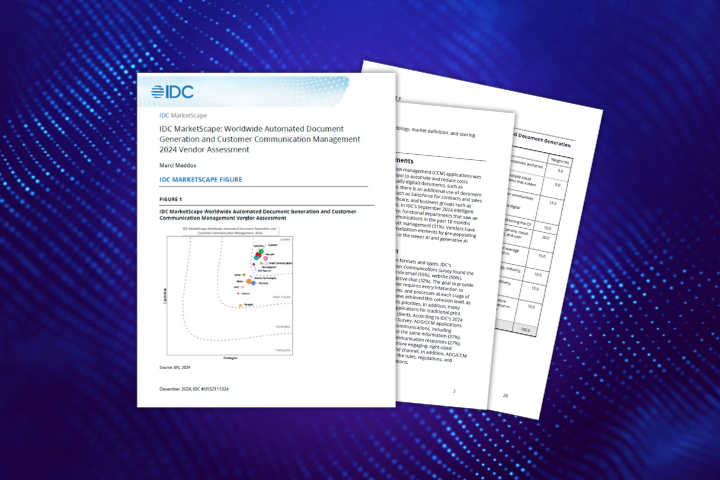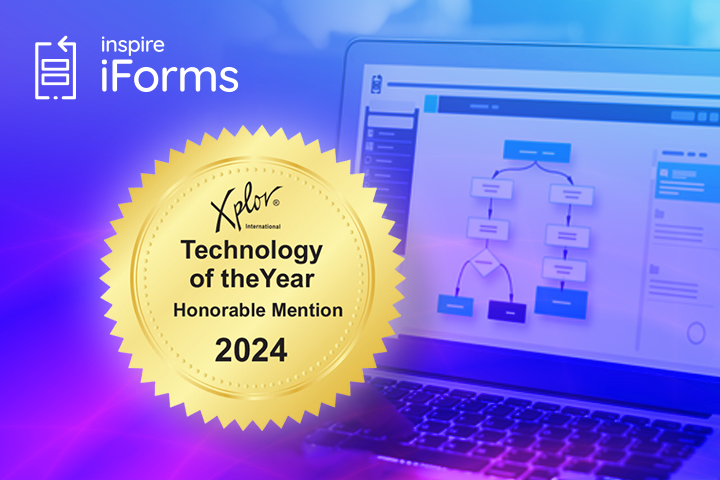Introduction
As financial services continue the journey toward digital transformation, they are discovering hidden obstacles—and surprising solutions.
Over the past decade, customer-facing processes for the financial services industry have undergone a massive transformation. In 2010, 46 percent of adults reported banking online; in 2021, that number reached 75.4 percent. And the pressure to digitize continues to grow. As of 2021, 70 percent of financial services organizations have developed a digital transformation strategy, and 30 percent are already implementing it.
But as the journey continues, banking and insurance organizations face new obstacles as hidden "complex processes" threaten to derail their digital goals.
Overview: Complex processes
While core processes directly support revenue-generating activities such as product development or customer acquisition, complex processes and/or services happen behind the scenes to support core business functions. These processes tend to be more manual, knowledge-based, and convoluted, and they feed into core processes peripherally.

To use an example from banking, core processes might involve helping a prospective customer sign up for a checking account or apply for a mortgage, while complex processes would support activities such as updating the power of attorney or adding another person to the mortgage.
In the case of an insurance company, a core process might help a prospect request a quote, while a complex process would help the customer change the beneficiary on a life insurance policy or add earthquake coverage to their home insurance policy.

Why complex processes evaded “first-wave” digitization
A quick scan of the digital landscape for financial services reveals that the first wave of digital transformation overlooked complex processes and focused on core functions such as sales and marketing. Today, many banks and insurers boast chatbots, self-service touch points, and call centers equipped with sophisticated sentiment analysis. Yet their complex and back-office systems are still stuck in the dark ages—decades behind the curve, in some cases.
There are a couple of reasons for this. The first reason is purely budgetary: core processes have always received more IT investment because these digital initiatives are "sexy," featuring customer-facing technologies that are slick, interactive, and brand-aligned. They also deliver tangible benefits that can be measured in terms of customer acquisition and satisfaction metrics.
Secondly, complex processes are more numerous and usually driven by manual processes and legacy technology. For every new credit card issued, for example, there are dozens of subsequent touch points required to maintain and deepen the customer relationship. The customer may want to increase their credit limit, add a secondary user, dispute a charge, redeem their points, and so on. These complex touchpoints tend to involve knowledge workers and legacy technology to perform the actions and process the data, which in turn requires a different approach to digitization.
Complex processes in the spotlight
But now that the dust has settled around the earliest digital transformation initiatives, the financial services industry is turning its attention to the next steps in the journey, which lead directly to the complex processes that drive the bulk of their product and service delivery.
For many financial organizations, this next phase has the potential to deliver benefits that rival—or even exceed—those realized in the first wave of digital transformation.
End-to-end automation. If these organizations can digitally connect complex processes with their already digitized core processes, they can achieve true end-to-end automation that delivers significant improvements in process efficiency, accuracy, and speed.
Fewer than 20% of financial services organizations have achieved enterprise-wide scale for their RPA efforts. (PwC)
CX enhancement. While technology has transformed the customer experience, the benefits have tended to cluster at the customer acquisition point, degrading considerably at later stages of the journey. For example, a customer who enjoyed the convenience of an online mortgage application may still need to visit a brand to complete physical paperwork.
64% of financial services companies identify CX as a top-five business priority for 2022. (HBR)
EX enhancement. Complex processes include a high proportion of manual, repetitive, labor-intensive tasks. Driven by fierce competition for talent, financial services organizations are focusing on streamlining and automating these processes to improve the employee experience and reallocate knowledge workers to higher-value activities.
Becoming a “technology-first” financial services organization is now a critical strategy in attracting talent. (International Banker)
The role of "low-code" solutions
Legacy technologies and IT bottlenecks are significant roadblocks to transformation in financial services, especially when it comes to transforming the complex processes that are most closely tied to these systems.
But the rise of "low-code" technologies is giving banks and insurers a powerful workaround that enables them to digitize without disrupting the fragile legacy ecosystems and workflows. Like the WYSIWYG ("what you see is what you get") interfaces that revolutionized web development in the early 2000s, low- and no-code platforms put technical capabilities in the hands of non-technical people. This allows employees to create applications that automate manual tasks, connect incompatible apps, merge siloed data, and solve other process challenges—without requiring IT support.
For the financial services industry in particular, low-code platforms are proving revolutionary because they can be used to layer powerful robotic process automation (RPA), digital process automation (DPA), and AI capabilities over existing legacy technologies. Examples include legacy-dependent processes such as onboarding, account servicing, claim centers, and call centers.
Silo-busting and citizen developers
The ways in which low-code platforms have changed the game for developers and non-technical employees alike is hard to overstate. For banking and insurance—industries that have seen their market share eroded by nimble fintechs—the disruptive potential of low-code solutions offers a clear value proposition.
Innovation acceleration. Low-code platforms have created new ranks of citizen developers, putting development tools directly in the hands of people with the greatest business domain expertise. Today, these citizen developers and fusion teams—multidisciplinary teams that blend technology, analytics, and business expertise—collaborate on and share accountability for business and technology outcomes. By bypassing the line-up for IT services, they are accelerating the development of personalized digital experiences for customers and streamlined workflows for internal processes.
Low-code platforms have created new ranks of citizen developers.
Data optimization. The financial services industry has struggled with two significant data challenges. The first is the prevalence of data silos created by legacy platforms and databases that don't integrate. The second is the proliferation of unstructured data that sits in emails, Word documents, and other sources. Low-code application platforms (LCAPs) enable the organization to streamline the collection of this data and structure it so that it’s ready to support downstream processes or be stored in an easily retrievable format. LCAPs can also be used to digitize paper-based processes, produce high-quality data for downstream processes, and even apply machine learning and AI to that data to extract even more value.
Workflow automation. Behind the surface gloss of mobile apps for customers, many downstream financial processes are still manual or document-centric. In other cases, the workflows are technology-enabled but require rekeying or manual processes to bridge the gap between incompatible platforms.
These process “breakpoints” hinder automation and straight-through processing (STP) efforts that are the key to improving the speed, accuracy, and scalability of the workflow. LCAPs help to bridge the gaps with apps that automate the transfer of data from one system to another, convert PDFs into dynamic digital experiences, embed eSignature capabilities, and more. By layering these apps over their existing technologies, financial services organizations can automate and streamline the workflow without ripping and replacing the underlying technologies.
Behind the surface gloss of mobile apps for customers, many deeper financial processes are still manual.
Low-code application platforms: The bridge to a digital future
The financial services industry has come a long way in a relatively short time. Today, most banking and insurance providers deliver sophisticated, digital experiences that enrich their customers’ first impressions of the brand.
But as the evolution continues, the discrepancy between those early touchpoints and the experiences that wait for customers further downstream has spotlighted complex processes and the critical need to digitize and streamline them.
Low-code and no-code solutions can help the industry work around the limitations of their legacy ecosystems, accelerate their digitization efforts, and empower business domain leaders to create next-generation capabilities, including document automation, STP, RPA, and AI.







